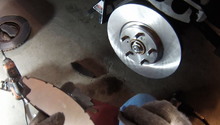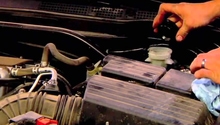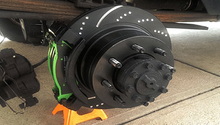Acura TL: Brake Modifications
Having the ability to slow the vehicle sooner allows you to stay on the go pedal longer. Read on to find some of the things which can be done to improve braking and stopping of your TL.
This article applies to the 3rd/4th Gen Acura TL (2004-2014).
Most people don't consider braking before they think about adding more power, going faster, or carving the corners. Having the ability to slow the car down is just as important, if not more important, in all of these situations. The following are some of the things which can be done to help your TL stop as you'd expect it to. Some things are more expensive, while other things are less. Read through the different upgrades and figure out what might be right for your vehicle. These might also give you some other ideas about how you can upgrade and improve the stopping prowess of what is already a great vehicle.
Starter Brake Upgrades

This first section covers some easy mods/updates you can do to your braking system. These may seem arbitrary to most, but they are often overlooked and should be done periodically, even on a non-performance car. These mods are fairly easy to accomplish and can be done in very short order.
Flush and Bleed Brake System

DIY Cost – $30
Professional Cost – $100-150
Skill Level – Easy; you just need a friend to help.
If you haven't flushed your brake system in more than a year, it could be well overdue. Most brake fluid is glycol-ether based and is hygroscopic, meaning it absorbs water over time. While the hydraulic braking system is sealed, as brake fluid ages or is overheated, it succumbs to moisture-absorption. As the brake fluid absorbs water, its boiling point is lowered. This can affect braking performance whether you are driving autocross, running a track day, or just driving on a mountain road. If the brake fluid gets hot and boils, you will find yourself with very spongy brake pedal, or even no braking performance until it cools down again. Brake fluid should be replaced at least every two years to maintain performance, and higher boiling point fluids cost only a little more than the cheapest stuff.
(Related Article: How to Replace Brake Fluid - AcuraZine.com)
Pads/Rotors

DIY Cost – $200-400
Professional Cost – $500-700
Skill Level – Easy; can be done in a couple of hours.
Brake rotors are not created equal. Differences in the hat design (i.e. the area that sits on the hub and mounts the wheels) and the internal vanes of the rotor can have substantial effects on the rotors ability to be an efficient heatsink. Additionally, there is the option to purchase rotors that are slotted and/or drilled. Slots in the rotor act similar to windshield wiper blades in that they wick excess pad material off the face of the brake pad to offer more consistent performance. Originally, brake pad compounds were prone to "gassing out" and overheating. Drilling the rotors allowed those gasses to evacuate more efficiently. These days, modern brake pads don't really have this issue, but drilled rotors offer a bit of bling if that's your thing.
Much like rotors, brake pads come in many different compositions. Depending on your goals, you can pick a brake pad to match. If low dust, and quiet is your goal, a ceramic-based brake pad is your go-to. If you're attacking the track or the back roads, and need a brake pad that can handle extreme heat, a racing brake pad is your ticket.
(Related Article: How to Replace Brake Pads/Calipers/Rotors - AcuraZine.com)
High-Temp DOT4/DOT5.1 Brake Fluid
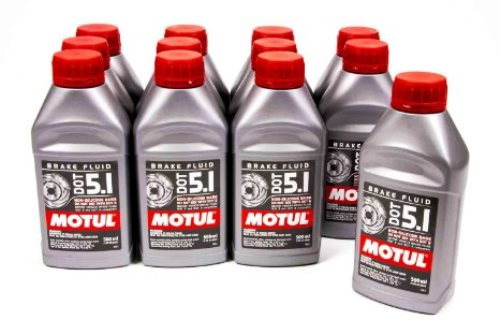
DIY Cost – $60
Professional Cost – $150-200
Skill Level – Easy; you just need a friend to help.
As talked about in the above flushing and bleeding the brakes entry, changing to DOT5.1 just involves flushing the old fluid out and bleeding it. The rewards come from the anti-boil properties of DOT5.1 brake fluid, which must be able to sustain temperatures in excess of 500 degrees before boiling: DOT3 is just 400 degrees. Like DOT3 and DOT4 brake fluid, DOT 5.1 is is glycol-ether based and is hydroscopic, so should be flushed periodically.
Intermediate Brake Upgrades
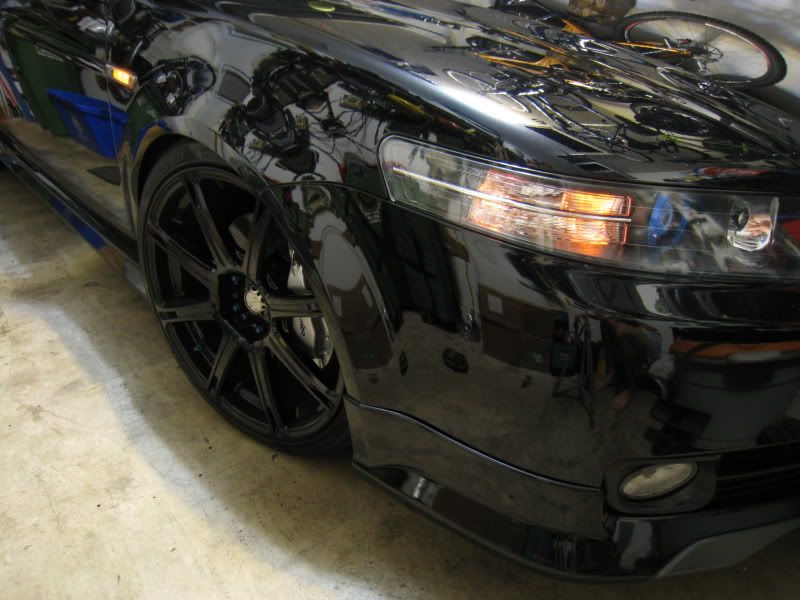
This second section covers some more advanced ways to get your TL to slow faster and have better braking control. These mods will take a little bit more time for the average enthusiast, and cost a little more, while still providing a great upgrade over stock.
Lighter Rims
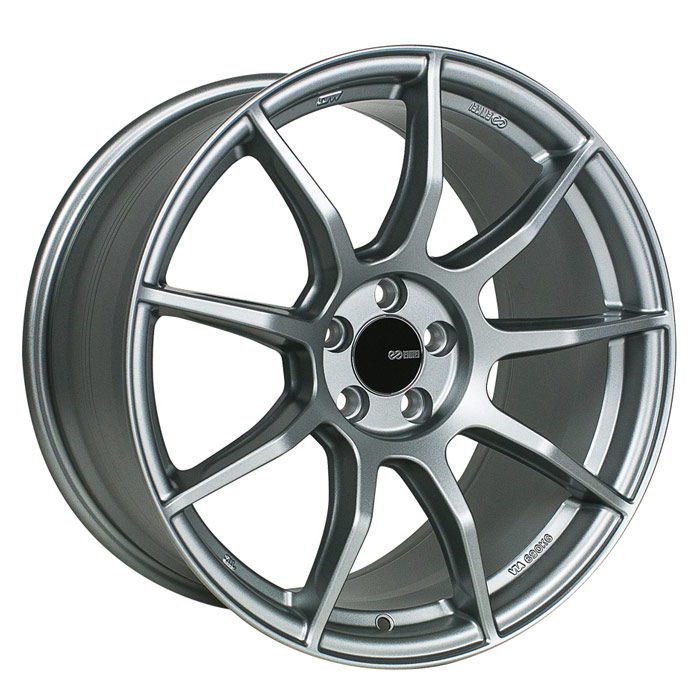
DIY Cost – $450 and up
Professional Cost – $900 and up
Skill Level – Moderate; due to cost involved.
While it is never cheap to replace rims, unloading some excess un-sprung weight can seriously help your braking, as well as your acceleration and your handling. Everyone knows that trimming some weight off of your car will increase the take-off and stopping abilities. What is less known is unloading un-sprung weight, which includes such things as tires, wheels, braking components, and suspension components can give you a 10:1 advantage over sprung weight. In other words, if you can reduce the total wheel weight by 10 lbs, it would be like taking a 100 lb weight out of your trunk.
Stainless Steel/Teflon Brake Lines

DIY Cost – $150-250
Professional Cost – $250-350
Skill Level – Moderate; Knowledge of how brake lines get installed.
Rubber brake lines can bulge somewhat during braking. This can give a soft feel to the pedal. This become extremely pronounced if there is a weak spot in one of the lines. Replacing these lines with ones which are Teflon lined gives a much better pedal feel and firmness.
(Related Article: How to Replace Brake Line - AcuraZine.com)
Auto Bleeder
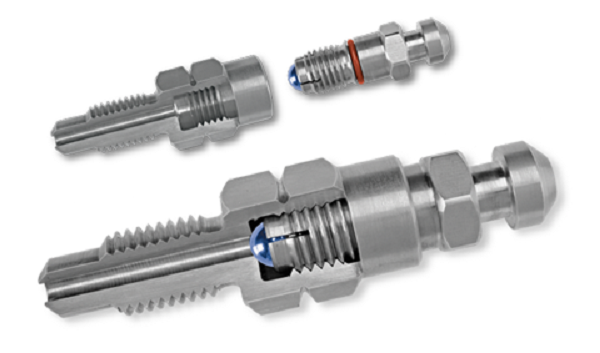
DIY Cost – $25-50
Professional Cost – $100-150
Skill Level – Moderate; a good understanding of brake bleeding is needed.
While rather cheap in the grand scheme of things, getting auto bleeders makes for a much easier job of flushing and bleeding the brake system. The bleeders will help you get the maximum amount of air out of the system, while being able to do the job solo. Having a minimum of air in the system means better braking and control.
Advanced Brake Upgrades

This third section covers some of the more complicated, but effective, mods you can do to your braking system. These mods are a lot more pricey than you've seen in the two previous sections. They are also more involved for the DIY enthusiast. Tackling these mods will take some time and knowledge of how the TL is put together.
Multi-Piston Brake Calipers
DIY Cost – $500-1,500
Professional Cost – $1,200-2,500
Skill Level – Advanced; cost can be prohibitive.
By using calipers which have pistons on both sides of the caliper, you get much more even clamping of the brake pad onto the disc. When combine with a well engineered caliper, like those from Brembo, the same amount of force from your foot has a much greater effect on the speed of your car. This can be an expensive mod for your vehicle, depending on the brand of caliper purchased to replace the stock caliper, and if you go with an aftermarket kit that did all the work for you.
Big Brake Kits

DIY Cost – $700-3,000
Professional Cost – $1,200-3,500
Skill Level – Advanced; cost can be prohibitive.
Big brake kits usually refer to complete packages of larger, thicker rotors, bigger often multi-piston calipers and endurance racing brake pads.
Larger diameter discs have two benefits: 1) greater leverage on the wheel, and 2) greater ability to absorb heat. Going to larger rotors will greatly improve the torque being applied, just like using a tool with a longer handle. Along with the greater torque advantage, having larger rotors also provides a greater thermal mass, which can withstand the greater amount of heat created under heaving loads.
Suspension Upgrades

DIY Cost – $750-1,500
Professional Cost – $2,000-4,000
Skill Level – Advanced; suspension setup can be tricky.
An often overlooked part of braking is the suspension. Your brakes can only apply as much force as the tires have traction. Parts such as poly bushings, upgraded struts, and springs can stiffen up the suspension, giving the tires a more direct contact to the road, providing more stopping ability.
Related Discussions
- 3rd Gen TL S Rear Brake Upgrade - AcuraZine.com
- TL Type S Racing Brake Upgrade - AcuraZine.com
- Acura TL Type S Rotor Upgrade - AcuraZine.com
- TL Brembo Upgrade Costs - AcuraZine.com

